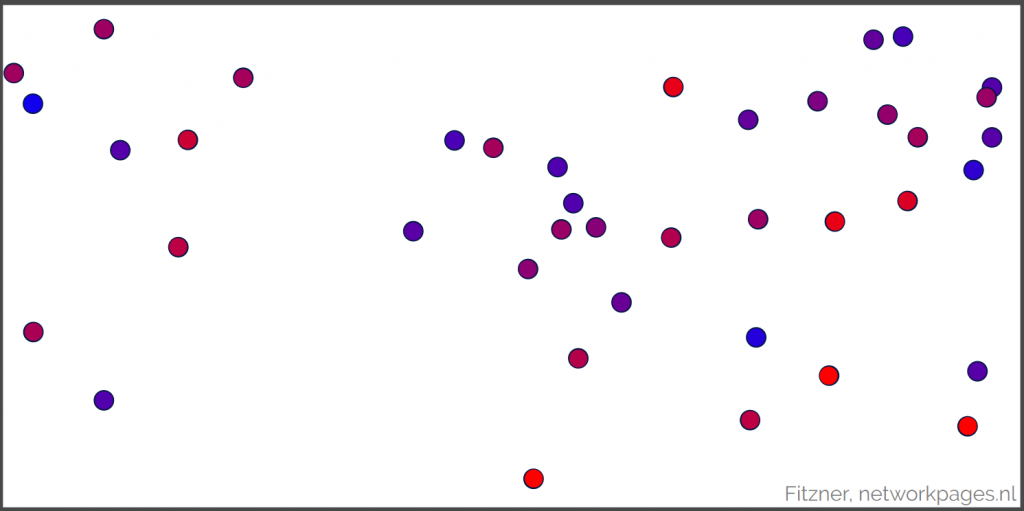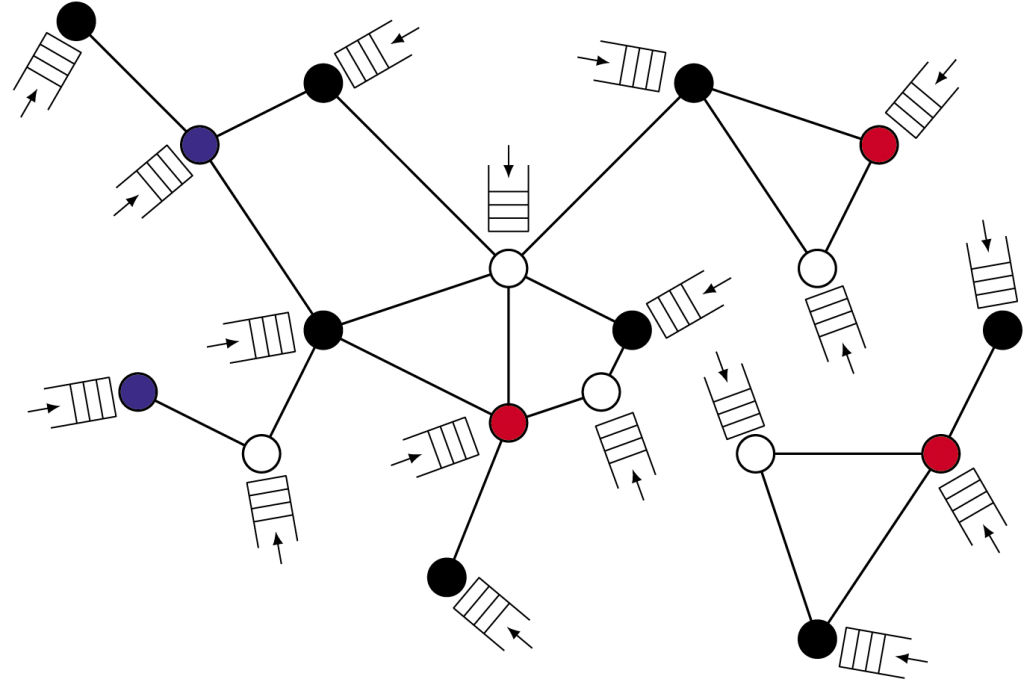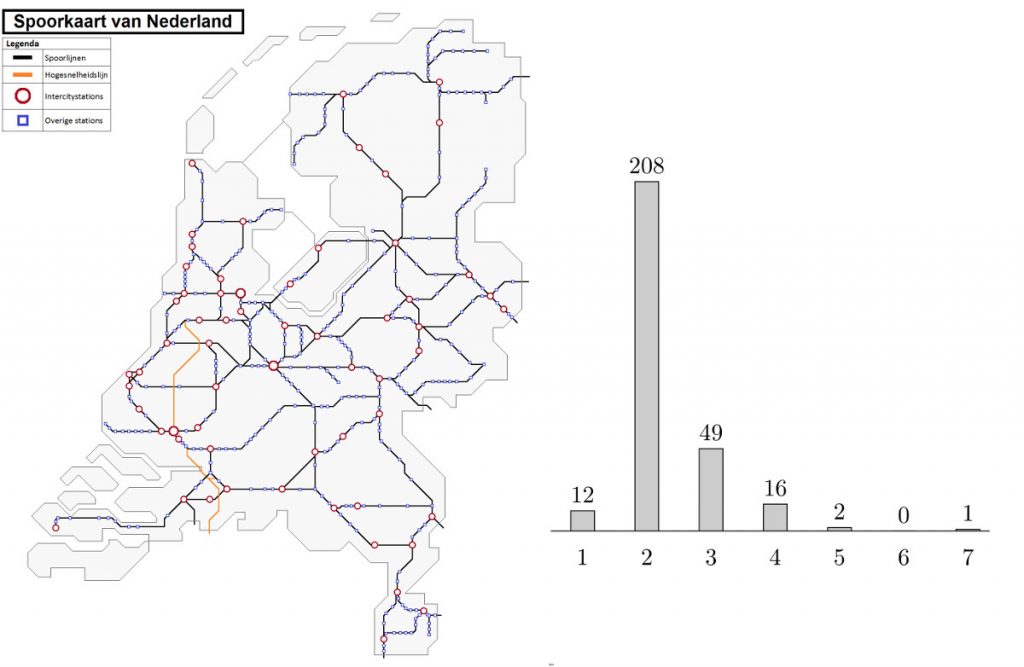Statistical physics

Interacting particle systems Statistical physics aims at describing collective behaviour in systems consisting of a very large number of interacting particles (= atoms or molecules). This is a daunting task: a glass of water or a piece of iron can easily contain 100.000.000.000.000.000.000.000 particles. Still, the hope is that the macroscopic properties of these particles […]
Stochastic models for random-access networks

Wireless communication networks play a crucial role in connecting laptops, smartphones, sensors and countless physical devices, and in exchanging data among persons, computer brains and other parts of our information society.
A Santa Claus network

Poor Santa has to travel all across the country to deliver all his presents. How does he do this?
Degrees in graphs I: the Handshake Lemma

A graph consists of objects called vertices and connections between them called edges. For every vertex, we can count how many neighbors it has, which is called its degree.
A big breakthrough in the Graph Isomorphism Problem
The graph isomorphism problem asks the computer to see if two graphs (simple networks) can be made to look precisely the same if the computer is only allowed to slide the nodes and stretch the connections (so the computer is not allowed to draw or or erase nodes or connections).
Networks to understand our DNA
![By Hennah, Porteous - [The DISC1 Pathway Modulates Expression of Neurodevelopmental, Synaptogenic and Sensory Perception Genes http://www.plosone.org/article/info%3Adoi%2F10.1371%2Fjournal.pone.0004906], CC BY 2.5, https://commons.wikimedia.org/w/index.php?curid=7681986](https://www.networkpages.nl/wp-content/uploads/2016/11/Network_of_how_100_of_the_528_genes_identified_with_significant_differential_expression_relate_to_DISC1_and_its_core_interactors-1024x666.png)
One beautiful, extremely important hidden network is the network of gene interactions: our DNA contains tens of thousands of genes. Some of these are really important. If you don’t have even one of them, you can’t live.
